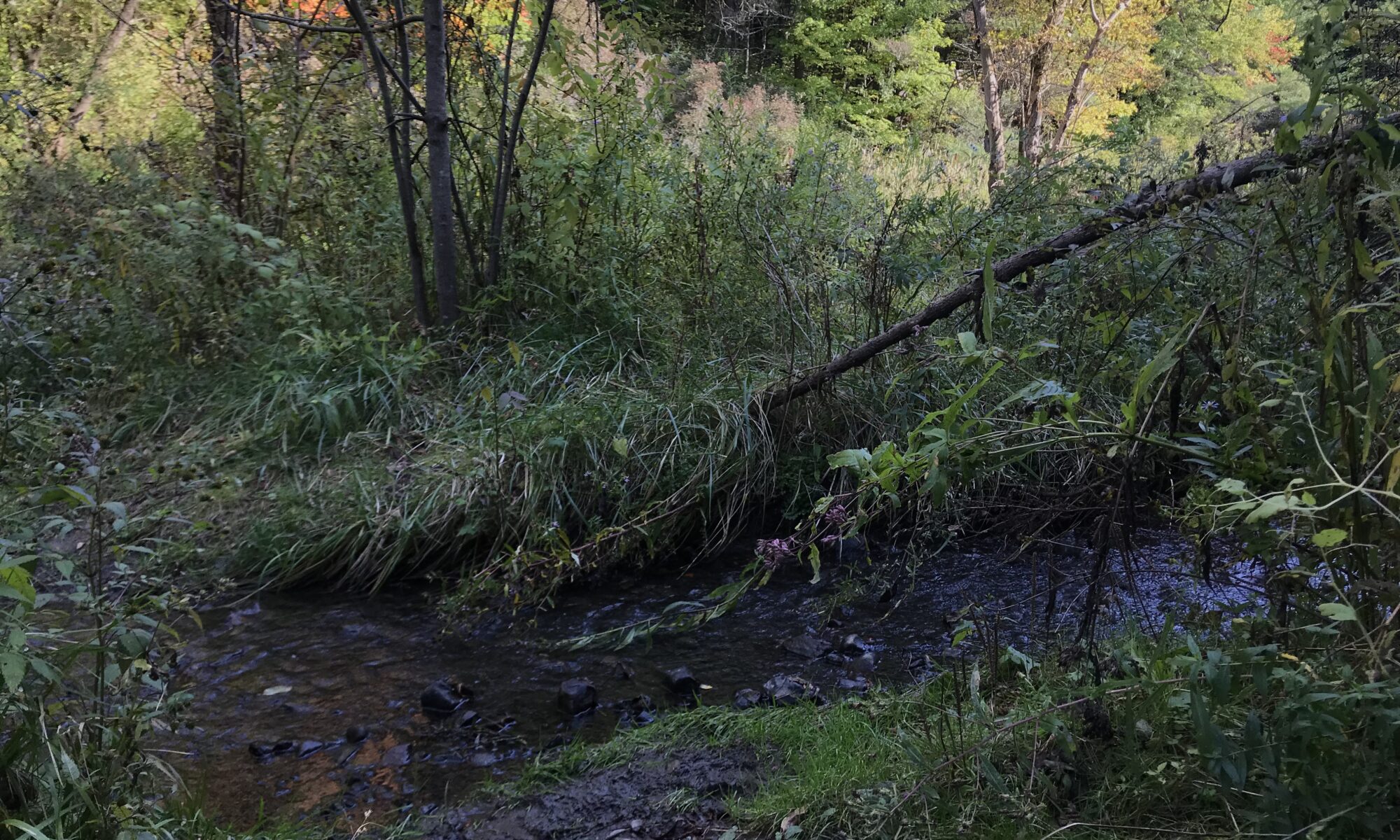Today, the 24th of February, I walked down to Centennial Woods with a little bit more excitement than normal because it is 50℉ out and super sunny!! Although it might not be the best for the weather to be like this in February, it is supposed to snow later in the week so I took this day as a taste of spring!

Emma Preuss. (Student). (2020). View from Harris-Millis Common on 2/24/20[Photograph].
When I arrived at my site there were about 6 inches of snow that were so saturated in water and completely packed down from foot traffic that it was completely solid. The landscape looked completely different to me than when I visited last because that was fresh snow falling. There are no major phenological changes that have occurred since that last visit other than the snow was melting a little bit due to the warm weather.
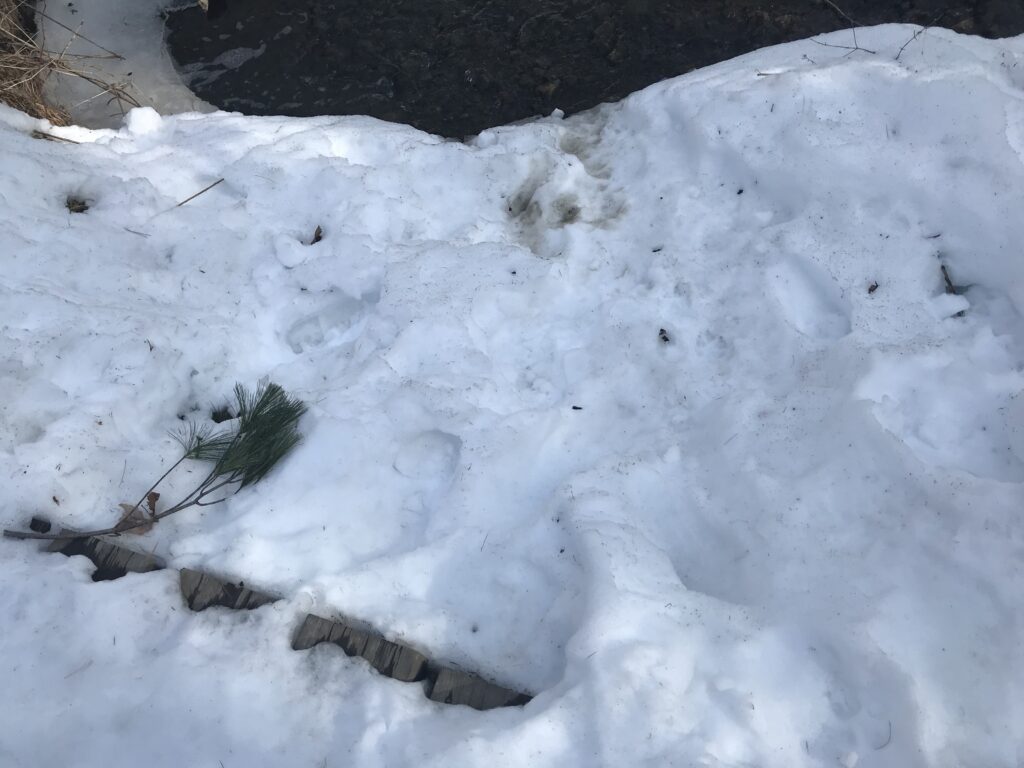
Emma Preuss. (Student). (2020). River Bank [Photograph]. 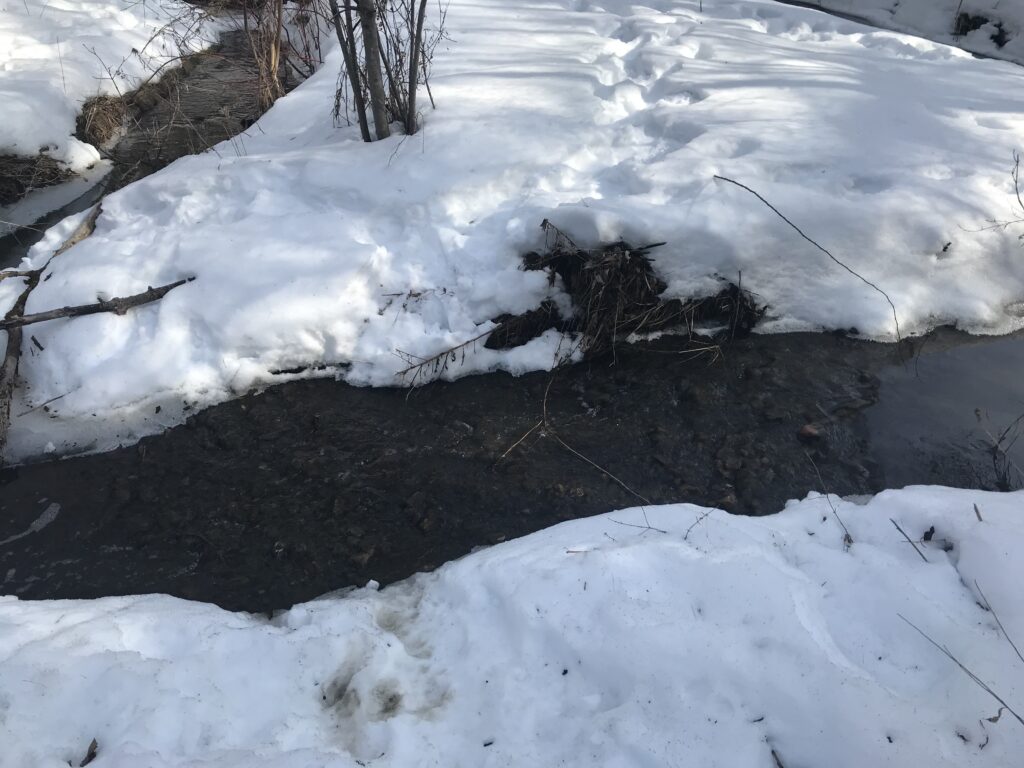
Emma Preuss. (Student). (2020). Stream Aerial View [Photograph].
The stream was rushing pretty strongly today which could be accounted for due to the melting snow rushing into the stream. The sound coming from the stream added a very mellow, spring-tone to the air while I was sitting in the woods and it got me excited for some green to start returning to my site.
With a larger focus on animal tracking this semester, I tried to find some animal tracks around my site which can be hard due to the amount of foot traffic my area gets. I finally found tracks from a Gray Squirrel which is very common but I was excited to find a track. The gray squirrel lives in the same area year-round and is found in mature hardwood forests with normally a high amount of oak trees and the squirrels like to be near a permanent water source ( Vermont Fish & Wildlife Department ). The squirrel whos tracks I found does definitely not live where my phenology site is but most likely uses the stream as a water source.
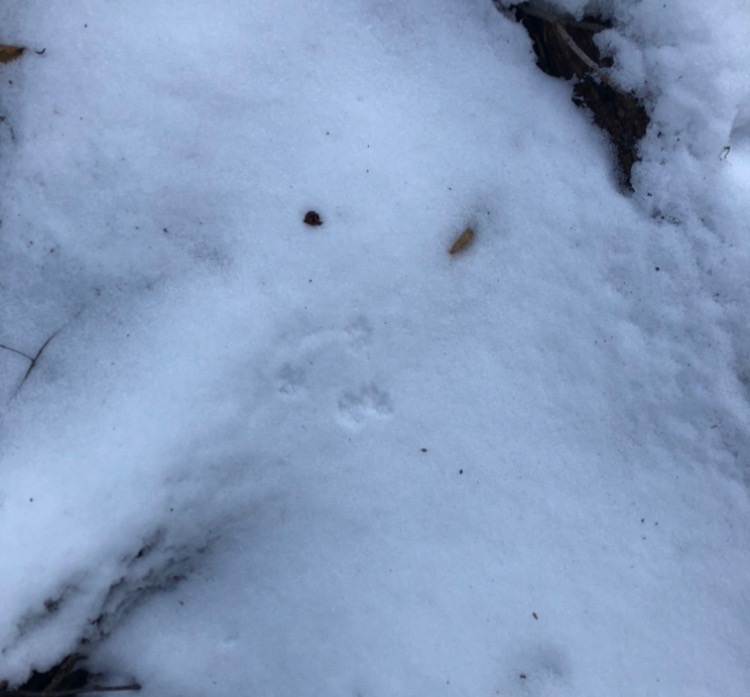
We’ve all been taught that squirrels eat acorns and nuts but there is never any specification on what kind of nuts they eat. The bulk of the gray squirrel ‘s diet is hickory nuts and beechnuts but they also eat mushrooms, small bird eggs, fruit, flowers, and insects ( Vermont Fish & Wildlife Department ). None of those items are currently thriving in Vermont’s winter landscape which is why squirrels bury their food in the fall and summer so they can survive the winter. I found evidence of the squirrel interacting with the landscape through a food stash a few yards past my site which further confirms the thought of gray squirrel activity. The gray squirrel spends most of its day finding its food stashes and getting calories from their food to get them through the days and then are found in their dens sleeping at night( Lawniczak, 2002). I also found a lot of bark in the snow that appeared to have been purposely ripped off of a tree. It was closer to the tree line where there is a thicker canopy and I believe that it is from the squirrel. Upon further research, I found that squirrels rip the bark off of trees because it makes a great lining for their dens so based on what I saw that makes a lot of sense (SF Gate).
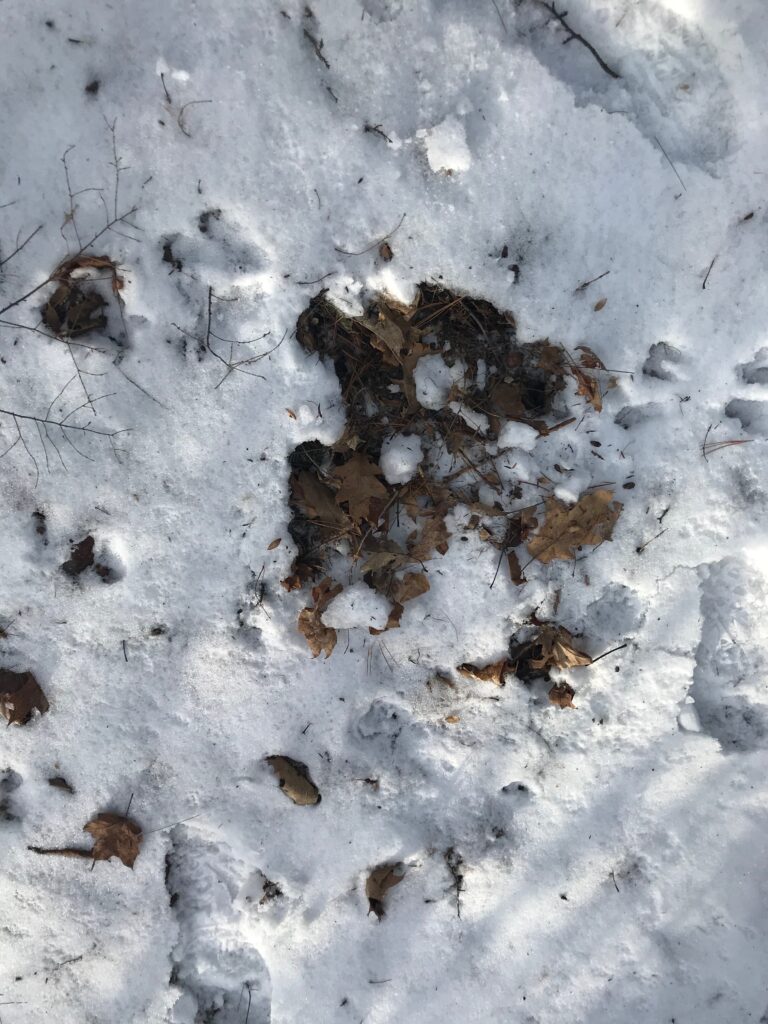
Emma Preuss. (Student). (2020). Squirrel Food Stash [Photograph]. 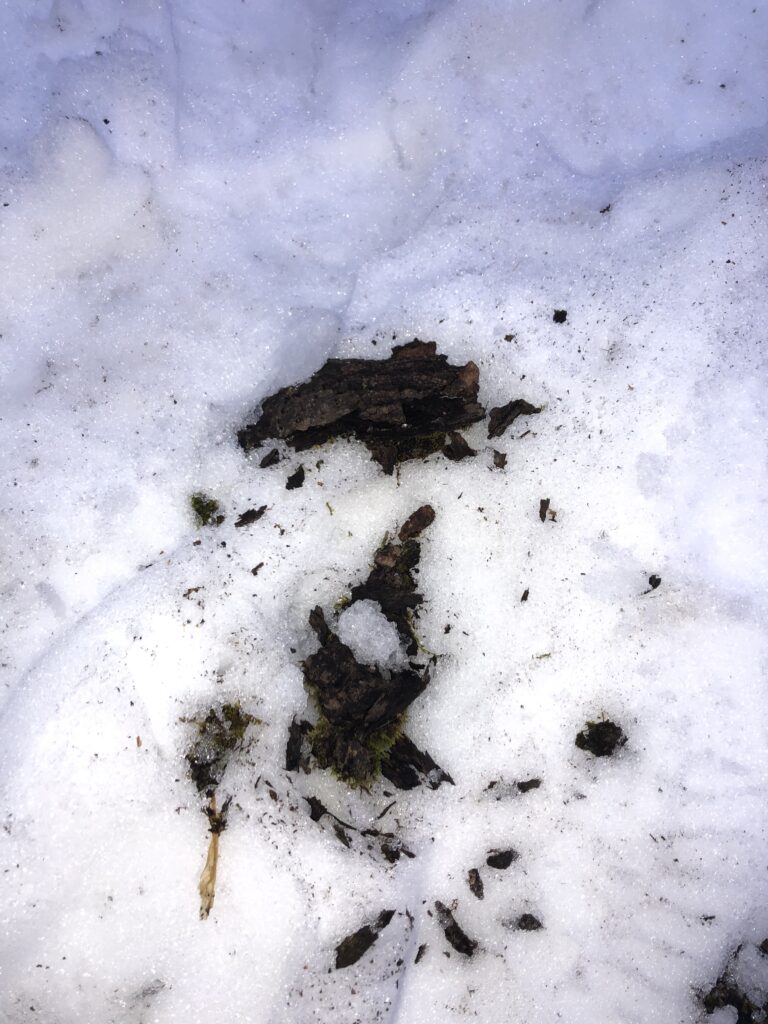
Emma Preuss. (Student). (2020). Squirrel Bark Remains [Photograph].
The gray squirrel does not travel on the ground too much and prefers to travel by hopping from tree to tree to avoid predators such as red foxes, red-tailed hawks, Cooper’s hawks, coyotes, bobcats, and humans(Lawniczak , 2002). Due to the open space at my site, it is not likely that the squirrels spend too much time at my phenology site because of fear from predators and the fact that there is little purpose for squirrels in this area as there are no nut-producing trees above my site.

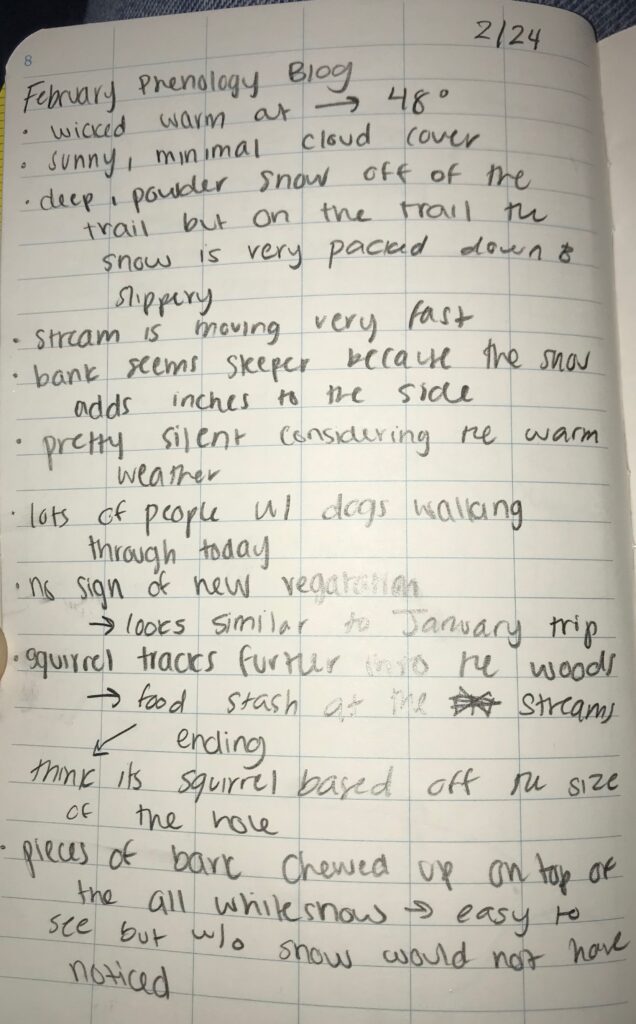
Works Cited:
Lawniczak, M. 2002. “Sciurus carolinensis, Animal Diversity Web. http://www.biokids.umich.edu/accounts/Sciurus_carolinensis/
SF Gate. (n.d.) Will a Squirrel Stripping the Bark off of a Tree Kill it? https://homeguides.sfgate.com/squirrel-stripping-bark-off-tree-kill-tree-92677.html
Vermont Fish & Wildlife Department. (n.d.). Gray Squirrel. https://vtfishandwildlife.com/learn-more/vermont-critters/mammals/gray-squirrel
